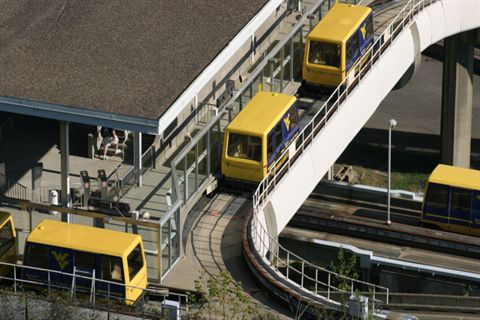Transit planners and lovers wax romantic about the virtues of transit oriented development as well as the potential of current and future urban areas to support successful public transportation. However, as Yonah Freemark at the Next American City points out, such development is only successful for cities that have sufficient urban density. Freemark discussed the early 20th century idea and development of streetcar suburbs and why they no longer have their streetcars and whether we will make the same mistakes again with current light rail developments. (My partner shared this column with me)
Aaron Renn argued last week on the Urbanophile that metropolitan areas with populations of less than about two million inhabitants don’t necessitate the kind of high densities urbanists often promote. Citing the example of Columbus, Ohio, Renn suggested that because these regions are small enough in area to make commuting from one end to the other by car possible within a short amount of time, creating dense, walkable neighborhoods focused around a “huge, packed, downtown core” is not absolutely necessary.
In some ways, his argument rings true: for those driving private automobiles, neighborhoods like the former streetcar suburbs may be ideal. For businesspeople hopping from one side of the region to the other (“to lunch”), driving in medium-sized cities works fine.
On the other hand, for everyone else—the young, the old, the poor, the sick—such neighborhoods provide no alternatives. You can’t easily walk to school or to the store or to the senior center when you live in a streetcar suburb. Nor can transit operators provide adequate service, since densities are too low to make frequent buses possible.
This discussion plays on something conceptually obvious, that to have successful transit there must be a critical mass of people relying on the service or else it is bound to fail. No government can afford to run buses or trolleys down thoroughfares on a frequent basis when they will be largely empty most of the time. Moreover, with insufficient density and a lack of commercial destinations for residents transit will be underutilized.
However, that idea may not be as obvious as it seems. I cannot count how many times I have been waiting for the Green Line trolley in Boston when I have heard fellow riders complain and wonder out loud why the MBTA is not more like New York’s MTA. The simple answer is that New York City subways are large, convenient and frequently running because they service a lot of people in a small area in densely populated Manhattan. Clearly, boarding a trolley with 12 other people in Brookline is incredibly dissimilar from joining hundreds at Columbus Circle.
Therefore, there are many cities that may have large populations that are insufficiently dense to provide the kind of transit service that gives people reason to give up their cars. In my mind for these borderline and unqualified urban areas there are at least three solutions if transit is to be developed.
1) Local, state and federal policy can encourage zoning changes to allow for greater density before building transit systems.
2) Communities can simultaneously adopt policies restricting the presence of cars per household and/or parking spaces to emphasize transit usage and car sharing. In this fashion only households which desire to utilize transit will move into these communities, rendering both density and transit-dependent density.
3) Perhaps the least feasible of the ideas, but I will continue to push for pod transit in the suburbs. I still believe a linkable pod system that utilizes public thoroughfares but simultaneously allows for the malleability of personal motor transit in suburban locations has a reasonable future.
As oil prices go up and American population continues to escalate we will want to develop successful transit systems. In order to do so we must develop the housing and parking policies that correspond to make both viable.



